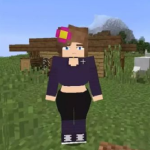

Daily Lives of My Countryside
Advertisement
Daily Lives of My Countryside introduces the player to a small rural settlement where Callum, the main character, returns after several years in the city. The premise focuses on adaptation to local life and the reconstruction of relationships with people he once knew. The story does not follow a linear path; instead, it is structured around recurring daily routines. Each day acts as a self-contained cycle that records progress through actions and decisions. The countryside setting serves not as a backdrop but as an ecosystem where the player’s behavior subtly alters how the town operates.
Advertisement
Similiar games
Daily Lives of My Countryside introduces the player to a small rural settlement where Callum, the main character, returns after several years in the city. The premise focuses on adaptation to local life and the reconstruction of relationships with people he once knew. The story does not follow a linear path; instead, it is structured around recurring daily routines. Each day acts as a self-contained cycle that records progress through actions and decisions. The countryside setting serves not as a backdrop but as an ecosystem where the player’s behavior subtly alters how the town operates.
Daily Routine and Player Actions
The central mechanic revolves around managing time and tasks across a single day. The player chooses how to divide Callum’s time among farming, maintenance, and interaction. Weather and season conditions affect available options, while energy limits determine how much can be done before rest. Farming and resource collection help sustain the household, while social contact strengthens Callum’s connection with the town. There are no strict objectives; instead, advancement is measured by familiarity with people and gradual improvement of efficiency. The process of repetition reinforces planning and observation rather than speed or achievement.
Social Connections and Local Community
The relationship system in Daily Lives of My Countryside defines how the story expands. Each townsperson has a personal schedule and a dialogue progression path linked to Callum’s attention and reliability. Regular interaction opens optional story segments that give context to the town’s collective life.
The relationship mechanics include:
· Reputation levels that influence access to events and items.
· Dialogue options that shift tone or alter small outcomes.
· Unique side tasks tied to individual characters.
These elements ensure that every decision, from a greeting to a shared task, influences how the community responds in later days, making the social layer central to the overall design.
Technical Foundation and Design Features
The game uses a tile-based 2D engine optimized for narrative-driven gameplay. Movement occurs across connected maps representing farmland, houses, and streets. The interface is organized into compact menus that track time, items, and relationship data. Music and ambient sound vary according to the time of day, producing a sense of temporal rhythm. System updates have improved dialogue navigation and load performance, allowing for smooth transitions between in-game locations and events. The clean layout keeps focus on content without overwhelming the player with visual noise.
Discuss Daily Lives of My Countryside




















